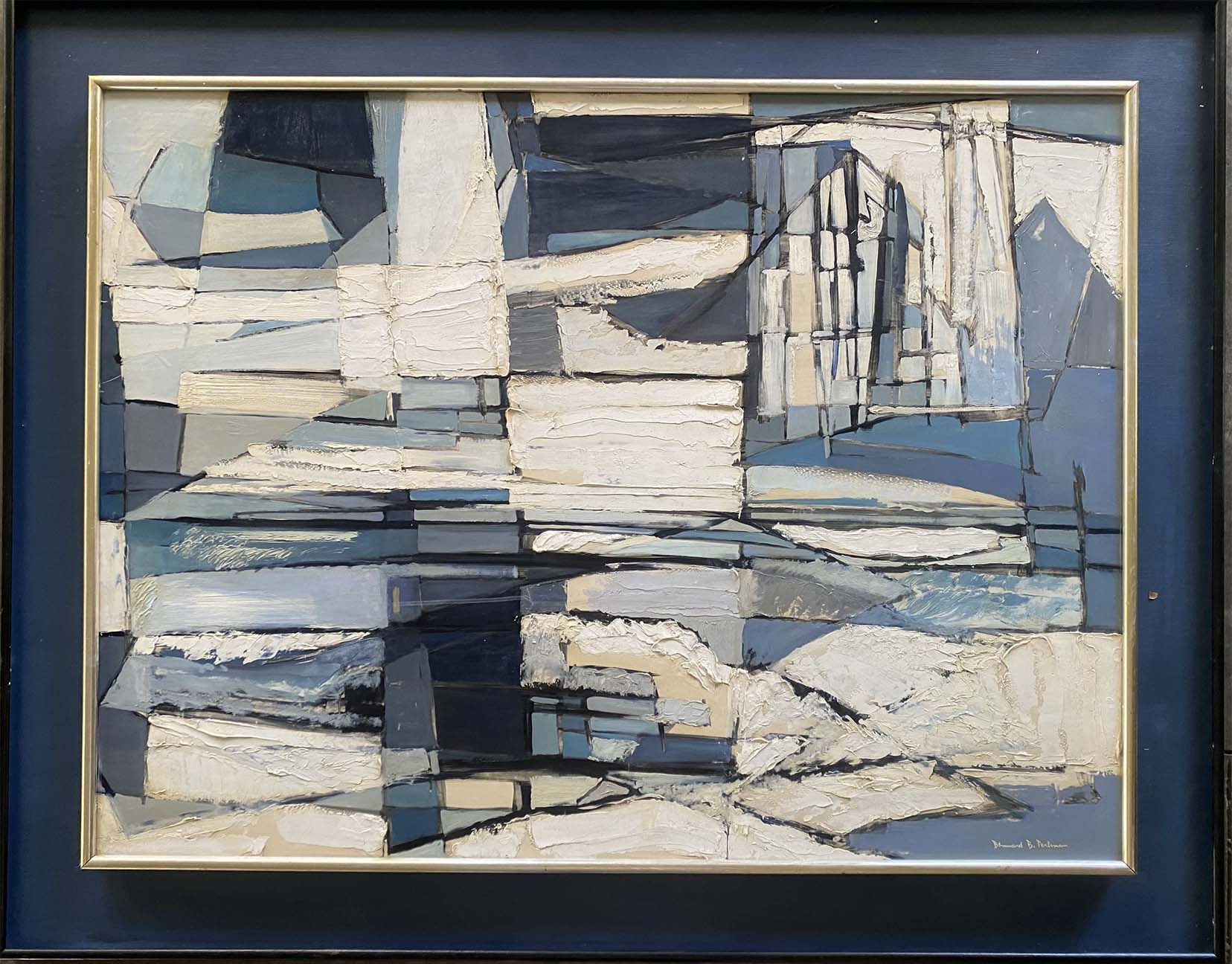Bennard B. Perlman, a Baltimore artist, professor, critic, lecturer and author who first exhibited one of his paintings in a museum at the age of 13, died Dec. 9 of complications from dementia at Milford Manor Nursing Home in Pikesville. He was 88.
"Bennard was a strong and passionate painter and a force in the public art effort," said Fred Lazarus IV, who was president of the Maryland Institute College of Art for 36 years before retiring in 2014.
"Bennard was a an important voice for that community and organizations," Mr. Lazarus said. "He was always very generous with his time and committed to other artists, not just himself."
The son of David Long Perlman, an electrical contractor, and Miriam Bloch Perlman, a homemaker, Bennard Bloch Perlman was born in Baltimore and raised on Mount Royal Terrace in Reservoir Hill.
He began drawing when he first learned to hold a pencil. When he was 16, he received an art scholarship to City College, graduating from there in 1945.
When he was 13, what is now the Walters Art Museum exhibited one of his works. The next year, he became the youngest winner ever of The Evening Sun's annual sketch contest with his Training Ships at Pratt Street.
He earned a bachelor's degree in 1949 in painting from Carnegie Institute of Technology, now Carnegie Mellon University, where classmates included Andy Warhol and Philip Pearlstein.
In an unpublished memoir, Mr. Perlman recalled meeting Mr. Warhol in a freshman class.
"Andy was certainly there, but his presence was easily overlooked. Standing just 5 feet '9 inches tall and weighing a mere 135 pounds, he appeared to disappear into the crowd both visually and verbally," Mr. Perlman wrote. "I never heard him shout or argue, never saw him in a fit of rage. He often seemed timid, awkward, vulnerable and noncommunicative."
After his time at Carnegie, Mr. Perlman earned a master's degree in art history at the University of Pittsburgh before returning to Baltimore in 1950.
In 1951, he joined the faculty of what is now the Community College of Baltimore, where he rose to become the chair of its arts department. He retired in 1986.
Mr. Perlman also taught at what is now Loyola University Maryland, Goucher College, Towson University and Morgan State University, and was a visiting lecturer at the Ruskin School for Art at Oxford University.
Mr. Perlman was a prolific painter and during his lifetime exhibited in 70 one-man shows. Some of his exhibitions were at the Baltimore Museum of Art, Maryland Institute College of Art, Pennsylvania Academy of Fine Arts, Corcoran Gallery of Art, Dallas Museum of Art and the Kennedy Galleries in New York City.
His work can be found in permanent collections at the Library of Congress, the Johns Hopkins University and the University of Arizona.
Mr. Perlman developed an interest in landscapes, seascapes and cityscapes, which he rendered in abstract or modernist styles.
"Although I created my first abstract painting in 1950, my style has changed considerably since then," Mr. Perlman told The Baltimore Sun in a 1964 interview. "At first, my interests were primarily tight, hard-edged abstractions, a kind of stained-glass Cubism; now it has become more refined, softer, where color plays an important part.
"I seldom paint still lifes, but when I do, I try to get the same amount of excitement in the stated arrangement of objects as in the sight of a train racing down the tracks at 60 miles an hour," he told The Sun.
Mr. Perlman eschewed the conventional image of an artist, and his style of dress leaned toward tweed jackets that he wore with shirts and ties.
"Some people feel that you can't be an artist without a beard," he said in another Evening Sun interview. "That sort of thing is so phony. What does it have to do with art?"
His son, Rabbi Jonathan Perlman of Cincinnati, said Mr. Perlman championed funding for art in civic architecture in the 1960s, and was instrumental in legislative and funding initiatives to support public art.
The longtime Pikesville resident, who later moved to Stevenson, was author of eight books, including The Immortal Eight, still considered the definitive history of the Ashcan school of art. For the book, Mr. Perlman was able to interview Everett Shinn, who was the last of the Immortal Eight alive.
He was also the author of The Golden Age of Illustration: F.R. Gruger and His Circle, published in 1979; and "The Lives, Loves and Art of Arthur B. Davies," published in 1998.
In addition to contributing op-ed pieces to The Baltimore Sun and Evening Sun, he wrote articles on artists and architecture for the old Sunday Sun Magazine and scholarly magazines. He was also an art critic for Baltimore Magazine, The Daily Record and WBJC-FM radio.
|

